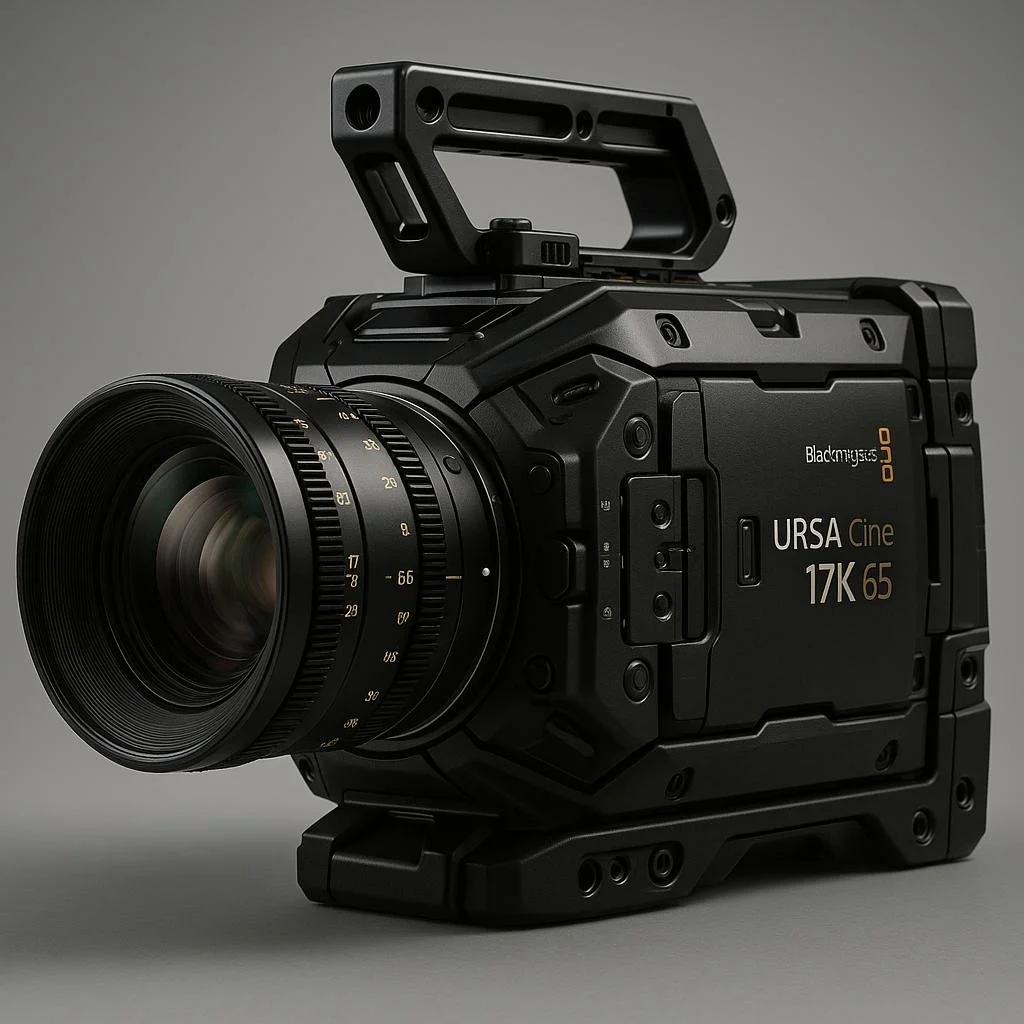Blackmagic’s URSA Cine 17K 65: A Game-Changer or Overkill?
By: Bill Milling
Blackmagic Design has always been an industry disruptor, pushing the boundaries of cinema technology while keeping costs within reach of independent filmmakers. With the unveiling of the URSA Cine 17K 65, they’ve taken things to an entirely new level. Two flagship projects, Iceland and The Ranch, were shot exclusively on this camera, showcasing its immense capabilities. But is 17K resolution truly necessary? And does this camera live up to the hype? Let’s break it down.
Pros: Why the URSA Cine 17K 65 Stands Out
Insane Resolution & Large Format Sensor
With 17K resolution and a 65mm sensor, this camera delivers unparalleled detail and image fidelity. If you thought 12K was excessive, Blackmagic has effectively doubled down on future-proofing.
For large-format productions, this means stunning depth, incredible latitude in post, and flexibility in framing—especially for IMAX and high-end VFX work. In Iceland, the breathtaking landscapes take full advantage of this sensor’s capabilities, capturing details down to individual ice crystals.
Dynamic Range & Color Science
Blackmagic has been fine-tuning its color science for years, and it shows. The URSA Cine 17K 65 reportedly offers over 16 stops of dynamic range, rivaling industry giants like ARRI and RED. In The Ranch, this was evident in the way the camera handled harsh sunlight and deep shadows, preserving natural skin tones and rich color depth without noticeable clipping or banding.
Post-Production Flexibility
With a resolution this high, you have unprecedented flexibility in post-production. You can crop, stabilize, and reframe shots without losing clarity, effectively turning one master shot into multiple angles. This is a huge advantage for VFX-heavy productions.
Competitive Price for High-End Productions
While the pricing hasn’t been officially revealed, Blackmagic has a track record of making high-end cinema cameras significantly more affordable than their competitors. If the URSA Cine 17K 65 follows this pattern, it could democratize large-format filmmaking in a way we’ve never seen before.
Cons: Where the URSA Cine 17K 65 Might Fall Short
Do We Really Need 17K?
Let’s be honest—most productions don’t even need 8K, let alone 17 K. The file sizes will be enormous, requiring massive storage solutions and powerful processing just to handle daily files. While future-proofing is great, most filmmakers are still delivering in 4K or even 2K, making this level of resolution overkill for many projects.
Low-Light Performance & Noise
One question that remains unanswered: How does this sensor handle low light? While large-format sensors generally excel in dynamic range, high-resolution sensors tend to introduce more noise at higher ISOs. Without extensive testing in real-world low-light conditions, it’s unclear if the URSA Cine 17K 65 can match the low-light performance of competitors like the ARRI Alexa 65 or Sony VENICE 2.
Storage & Workflow Challenges
With 17K RAW footage, even a high-end production team will struggle with data management. If Blackmagic hasn’t introduced efficient compression or dual-resolution capture options (like RED’s simultaneous 8K and 4K proxies), then this could be a logistical nightmare for post-production workflows.
Limited Industry Adoption
Most major Hollywood studios and streaming services already have standardized post pipelines built around ARRI, RED, and Sony systems. Blackmagic’s BRAW format still doesn’t have universal adoption across all post houses, which could create compatibility issues for high-end feature films.
Final Verdict: A Bold Move, but Is It Practical?
The Blackmagic URSA Cine 17K 65 is an astonishing piece of technology, proving once again that Blackmagic is willing to push boundaries. It’s an exciting option for high-budget productions, but for most filmmakers, it might be too much camera for what they actually need.
If your production requires IMAX-level resolution, VFX-heavy workflows, or future-proofing for the next decade, this camera could be a game-changer. But if you’re working on standard commercial, indie, or even high-end TV work, you might be better off sticking with a 6K or 8K system that doesn’t require a post-production supercomputer to process files.
Would I use this camera? Absolutely—but only for the right project. If Blackmagic keeps this at an accessible price point, we might see a new era in large-format filmmaking for a wider range of productions. Until then, I’ll be keeping a close eye on how this camera performs in the real world.

